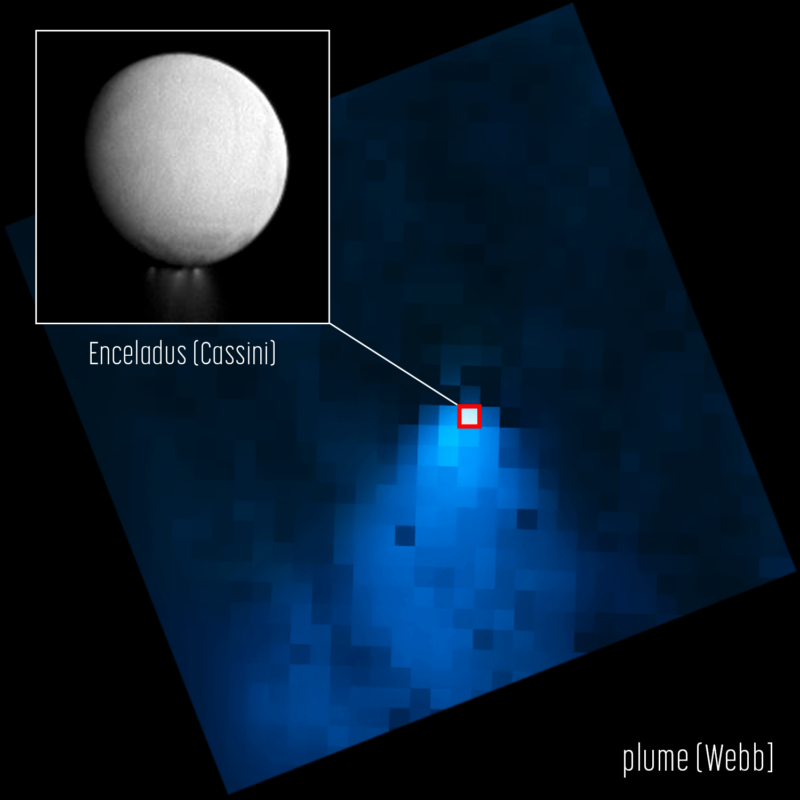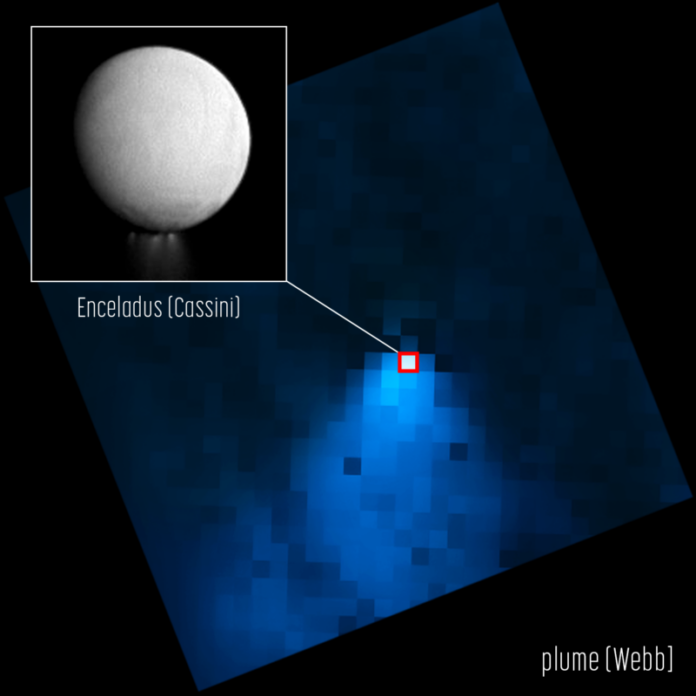
Enlarge / A close up of Enceladus (inset) and a wide-field view of the geysers it creates. (credit: NASA, ESA, CSA, STScI, and G. Villanueva)
Enceladus, a frozen moon orbiting Saturn, has caught the interest of scientists because of the plumes of water vapor that erupt from its icy crust, which are possible evidence for a subsurface ocean. And an ocean means it has the potential for life (at least life as we know it). Now NASA’s James Webb Space Telescope (JWST) has caught sight of a plume like no other.
Plumes of water vapor erupt from Enceladus via cryovolcanoes that form over cracks in the ice. These plumes can extend hundreds of miles from the surface. When a team of NASA researchers looked closely at the new JWST data, they realized one plume near the moon’s south pole was far larger than any other. At over 9,500 km (6,000 miles) long, this is the most extensive spray of water ever seen in space. It is 20 times the size of Enceladus itself and extends far enough to easily cover the distance from Los Angeles to Buenos Aires. As Enceladus continued to orbit Saturn, this water vapor plume formed a ghostly halo around the planet.
“This level of [water] activity… establishes Enceladus as a prime source of water across the Saturnian system,” the researchers said in a study accepted for publication in Nature Astronomy.
Read 9 remaining paragraphs | Comments
Ars Technica - All contentContinue reading/original-link]




